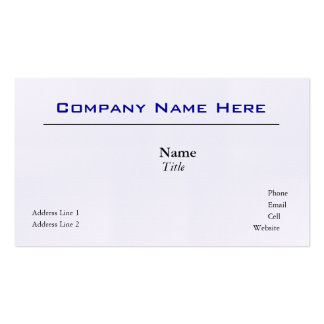It has been said that we do business with people that we know, like and trust. This couldn’t be more true anywhere than in online marketing of your brand.
Business owners are often frustrated when they focus on marketing activities like SEO, PPC and e-mail marketing and then find that those channels aren’t bringing them the ROI and results they were expecting. Often the reason why those channels are not performing as well as they could is that there isn’t a larger, co-ordinated strategy focused on targeting the ideal buyer with content, and creating a system for nurturing visitors to leads, and leads to customers.
Ensuring that your marketing strategy involves “closing loops” while nurturing those who are not in the buying stage of the process can really increase your results over time.
Ready to get some results? Let’s get started.
What Inbound Marketing Is
Inbound marketing is a way of planning and building online marketing campaigns that focuses on earning the attention of your ideal buyer as opposed to having to interrupt your buyer when they are not expecting it. Earning the attention of your ideal buyer is most easily done by creating useful, informative and educative content on your website, and creates trust.
What Outbound Marketing Is
Outbound marketing is the opposite, and focuses on “pushing” your brand marketing to interrupt your ideal buyer, hoping that they take action and engage with you. Outbound marketing, unfortunately, rarely connects with your ideal at the right time or place in order to encourage engagement, and many times frustrates consumers. TV commercials, radio ads and banner advertising are some examples of traditional outbound marketing.
What Inbound Marketing Isn’t
Inbound marketing isn’t a quick fix for business, or a single way to improve SEO. It is instead a way to pull all of your marketing strategy and marketing channels together in a way that attracts ideal buyers, increases long-tail organic traffic, engages consumers and helps direct your ideal buyer to take action. Assuming that you have a good brand and valuable product or service inbound marketing can build more traffic, more leads, more sales and happy customers. What’s more; inbound marketing can differentiate you from your competition which is crucial in this day and age of competition.
Here are 15 practical ways to use inbound marketing to drive more traffic, leads and customers to your business.
- Know your ideal buyer
By understanding the ideal buyer you can refocus your inbound marketing strategy, content and flow to speak directly to the needs of those people or teams.
You can learn more about buyer personas here.
- Set your campaign goals
For example, knowing how many leads typically convert to proposals or quotes, and how many of those convert to sales helps forecast and goal-set for the amount of traffic you will need to support those goals. You will want to know those goals inside and out, and preferably work backwards from traffic / leads and revenue, building a strategy that supports those goals.
- Map your content
The Content Marketing Institute (CMI) has a great breakdown on how to map your content so that you can nurture leads through the buying cycle, closer to your brand, to a sale.
- Create your content calendar
- Plan your marketing / lead nurturing workflow
Here is a good article about how to build a lead nurturing workflow, or fix an underperforming one.
- Create your measurement plan
Measurement lies at the heart of any great marketing campaign. In order to know what and how to measure your campaigns, you will need to take some time to evaluate your campaign and understand what your business goals are and ideally how your website contributes to those end goals.
Dig in deep and carefully determine (audit) what you consider a goal on your website. Understand the importance of each of those goals as they constitute to your overall business goals. You will then want to employ a web developer to help implement Google Analytics or a similar digital analytics tracking program on the website so that you track each one of those important areas.
Example: You are a dental professional who is looking to increase relevant traffic and leads from your website
You will probably want to track initially:
- Lead Forms – tracking visitors to leads through to thank you pages
- Phone Number – the total number of calls via the number at your website
- Offer Form – tracking visitors through offers at your Offer pages
- Downloads – tracking the number of times content has been downloaded
The Google Digital Analytics Academy offers a good video that helps to chart out your plan.
- Build your offers
Offers can take the shape of eBooks, guides, videos, limited time membership access or even one-on-one free consulting. Do some thinking on what assets and resources your brand has available and then craft some offers that are compelling and encourage visitors to exchange their contact information for your offer.
You can learn more about offers here.
- Craft your landing pages
Unbounce has developed a great guide to landing page optimization here.
- Create and test your e-mail nurturing campaigns
Based on your buyer personas and content mapping you should have a fairly focused sense of what the common problems are for your ideal buyer. Ensure that your email campaigns take those potential customers through a logical flow with an end result (most often your primary business goal). Setting your final ideal goal is crucial in creating the right campaign.
Also be sure to track your email campaigns so that you can measure your email basics such as the number of times emails have been opened, links have been clicked, and action has been taken.
- Re-organize your blog
- Create a right hand column CTA (call to action) for your newsletter subscription
- Add social sharing widgets so that your content can easily be shared out
- Create blog post footer CTAs which drive the consumer in to take further action
- Create one right hand column CTA to educational content (an EBook, guide, whitepaper)
- Add high quality images to increase conversion rate and reads for your content
- Add thumbnails to blog posts on your blog landing pages and categories
- Ensure you create an author profile / bio complete with a professional image of yourself
Here are some additional ways to improve your blog and drive traffic.
- Write consistent content for your blog
The key to great blogging is to be consistent and persistent. This means creating a content schedule focusing on your ideal buyers and sticking to it. Most highly successful bloggers will tell you that the biggest results in blogging come from consistently building remarkable content weekly.
Start by simply starting. Pull your first topic from the content calendar, and start writing! Always ensure that you have someone else proof your piece to ensure that it reads well and is error free (unless of course you have communications / writing skills)
If possible include employees in your content generation efforts.
I would recommend that you schedule posts in advance. This can be done relatively easy in most common CMS and blogging platforms and allows you to build content in advance, helping ensure content is scheduled consistently. This also helps you “pre-promote” content in advance before it is scheduled.
- Optimize your blog posts for long tail keywords
Ensure that you optimize your Title tag and page copy for each post around these keywords in order to maximize on your share of potential traffic.
Here is a HubSpot guide on long tail keyword research and optimization of your blog posts.
- Share your content socially in the right platforms
Be sure to share important offers, new blog posts, company news and important industry events in social media regularly.
- Drive and test traffic from online channels
- Paid Search
- Video Marketing
- Social Media
- Local Search
There are an unlimited number of online marketing channels you can test to see how your landing pages, offers and system perform. Because you implemented a measurement plan, you can now track your progress and make adjustments to your campaign over time.
- Test, Measure, Analyze, Feedback.
In online marketing nothing could be more accurate. Great online marketing always boils down to creating reasonable hypotheses and then testing the heck out of them, and evaluating results.
Inbound marketing is a continuous cycle and is ever-evolving and growing. Sometimes you need to pivot. Other times you need to scrap ideas and evolve new campaigns from your knowledge. At each step you learn grow and understand what your audience needs.
Achieving “know, like and trust” at every touch point your audience is key. Great content, and inbound marketing, can help to make that happen.








No comments:
Post a Comment